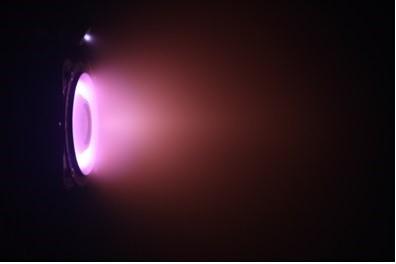News

THE NEW CHALLENGES OF SPACE LAW
A NEW APPROACH TO SPACE EXPLOITATION
Public international law has a number of specialized branches, such as the law of the sea, airspace, river traffic, space and international trade. This gradual specialization of public international law, which has been imposed by the opening up of the world and the proliferation of trade, aims to ensure regulation between States and private operators, and to define their responsibilities.
INITIAL SPACE ACTIVITY (1954-1962): MILITARY PRIORITY FOR NUCLEAR MISSILE DETECTION
The space race amplified the Cold War, which was marked by an arms race. The development of atomic bombs, launched by ballistic missiles, justified the dispatch of spy satellites, in parallel with scientific developments. Based on the experience of exploration missions to the poles, discussions on space turned to ways of partially demilitarizing scientific research by participating in open civilian programs: satellite programs were envisaged with a view to organizing the 1st International Geophysical Year, which was to be marked by the launch of the first artificial satellite in 1954. This was a step towards scientific sharing, including the sharing of technical information for peaceful purposes. Beyond science, tensions remained persistent: the launch of Sputnik (1957) versus the Explorer missions (1958) and the Vanguard program (1955-1959, launcher + satellite, 9 failures out of 12 launches). At the 1958 Moscow meeting, the political tensions of the Cold War remained: - The United States and the Soviet Union were already at loggerheads over the nature of the satellite data to be exchanged; - The Chinese delegation from Taiwan had not received its visas (the State Department had encouraged the parti-
In 1963, to combat nuclear proliferation, the Moscow Treaty was signed, banning nuclear weapons tests in and outside the atmosphere.
Emerging space law
Its aim is to avoid zones of tension, promote scientific progress and preserve space from militarization, under the aegis of the UN, as embodied in the 1967 treaty, a regulation under the aegis of COPUOS (Committee on the Peaceful Uses of Outer Space).
This branch of international law governs the technical activities of States in the use and exploration of "outer space" according to a set of rules and principles, such as non-appropriation, limited sovereignty and State guarantees in return for the requirement of safety.
DEVELOPMENT OF SPACE ACTIVITIES (1962-2011) AND DUAL STATE RESPONSIBILITY FOR OBSERVATION, TELECOMMUNICATIONS, NAVIGATION AND SURVEILLANCE
As the world began to relax, space operations remained the responsibility of individual nations, with a dual focus on human and robotic exploration missions, alongside military and scientific applications for Earth observation, communications and navigation, and commercial satellite missions, as well as space stations, pending the establishment of permanent bases on celestial bodies.
The race for space continues with :
- business liberalization ;
- the proliferation of public and private space agencies.
These players have launchers, satellites or space probes, spaceplanes and commercial operators developing activities and services, including space tourism.
LETTRE 3AF 4-2024 / OCTOBER- DECEMBER
ESPACE
THE NEW CHALLENGES OF SPACE LAW
Space law, under the aegis of COPUOS since 1959 (currently made up of 102 States), remains the responsibility of the States and distinguishes : - Follow-up of international agreements marked by détente and international cooperation on technical matters: exploration, in-orbit services, space technology applications and use of extra-atmospheric resources.
Public international law - based on a dual objective of peace and the common good of mankind - is a sufficient deterrent for the parties to reach an agreement, such as the 1961 Convention on the Register of Launched Objects.
Its sources are five treaties based on 5 principles relating to outer space and its non-competitive exploitation, marked by i) freedom of access ii) freedom of use iii) the duty to register and inform iv) the duty to assist and v) the responsibility of States:
- Outer Space Treaty (1967) on the principles governing the activities of States in these fields;
- Rescue Agreement (1967) on the rescue and return of astronauts and space objects;
- Liability Convention (1972) on International Liability for Damage Caused by Space Objects;
- Registration Convention (1974) on the registration of launched objects;
- Moon Treaty (1979) on activities on the Moon and other celestial bodies, now criticized for its appropriation of resources.
The fate of these treaties has been uneven, and they have not been ratified by all the member states of the Committee: space law is becoming a branch of public international law that advocates multilateral cooperation under the responsibility of states,
because they depend on the sovereign interests of individual states.
The issue of debris or waste management was addressed as early as the 1980s, and in 1993 led to the creation of the IADC (Inter-Agency Space Debris Coordination Committee), tasked with developing "best practices" for protecting space from man-made space debris.
- In exploration, the paradigm shift observed over the last twenty years and the arrival of new entrants are marked by a new ecosystem of public and private players.
and raises the question of resource appropriation and commercialization. It leads :
- On the one hand, to develop space law through the emergence of a private international law along 3 lines:
˃ the delimitation of the various outer spaces and the question of their management, particularly in view of the risks of collisions and interference in communications;
˃ the fields of application of public or private international law and their interaction according to Article II of the 1967 Treaty, confronted with the ARTEMIS agreements (2020) ;
˃ the exploitation or appropriation of space resources and the conditions for sharing them as "common goods".
- Secondly, to link the new value of spatial data not to space law, but to information law, or even commercial law:
˃ Scientific data subject to open source, with nuances as to its use (military, meteorology, etc.) reserved for first-time operators (for the first 18 months), sometimes organized in networks or alliances;
˃ Commercial data for which the conditions of creation, capture, programming, traceability, broadcasting or distribution are the responsibility of the owner operator (including the military);
˃ Raw or original data with a legal framework, accessible according to their application, or type of satellite data from the Copernicus program, via the new data space under European legislation (2013).
FROM MAJOR PUBLIC INFRASTRUCTURES TO THE NEW SPACE ECO-SYSTEM SINCE 2011
Space exploration is reaching maturity thanks to innovation and technological breakthroughs, and is becoming more competitive thanks to the reusable concept (cf. SpaceX's Falcon 9 launcher) and the renaissance of low-orbit constellations providing reliable, secure and resilient internet connectivity. New Space is a new ecosystem capable of taking financial, technological and economic risks, under the constraints of international space law. Still under the responsibility of the States providing their guarantee, without which there can be no private launchers, the question arises as to the occupancy and operation of the spacecraft.
ESPACE
THE NEW CHALLENGES OF SPACE LAW
control of terrestrial orbits, notably through various satellite constellations, including those of various Southern Global nations and China. The satellite business is diversifying as a result of the democratization of uses linked to cost reductions in communications, information sources and military intelligence, and eventually manned space flight, but it also needs to organize :
- the technical management of access regimes to extraterrestrial space; - the nature of cost reduction (i.e. reusable launchers and standardized satellites);
- frequency and bandwidth allocation ;
- the increasing densification of space by numerous private players as part of institutional or private programs.
At the same time, it raises questions about the future exploitation of extra-terrestrial resources (the Moon, Mars, asteroids, etc.), scientific research and manned space flight: - the establishment of human bases in space;
- space traffic management, particularly in low-Earth orbit (i.e. constellations, debris);
- space players (manufacturers, operators, service providers, brokers, insurers) according to insurable phases and coverage;
- people on board, between astronauts (Article V, 1967 and 1968 agreement on the duty to inform, rescue and repatriate) and paying passengers in terms of carrier liability.
In addition, the growing militarization of space and the beginnings of a space war have led to the creation of space surveillance and intervention resources.
There is a clash between space managed by public agencies and space marked by privatization, even under national regulations such as those of the Federal Communications Commission (FCC), or the agreements between the US National Science Foundation (NSF) and SpaceX for its Starlink satellites; or even legislation on space operations adopted by a State, such as in Russia (Decree 5663-1, 1993); in France in 2008; or in preparation, such as the European Space Law (PPRE, 2023), relating in particular to space traffic management.
Strategic competition is organized by the adoption of national laws and policies that take into account national interests in space exploitation, starting with the occupation of Earth orbits by private players, but under the responsibility of their states, with a view to ensuring the security, surveillance, sustainability and development of the space sector.
This interweaves three legal levels, between international, national and hybrid standards.
-Situation of European States with the European Space Agency (UESPA) and the intergovernmental agency ESA on the question of sovereignty, shared competences, limited today to three flagship programs: Galileo & Egnos (navigation and positioning) and Copernicus (Earth observation):
- The agreement on the Guiana Space Center and the principle of a public guarantee (over €60 million);
- Project management for satellite launchers and satellites with the EUTELSAT organization (1977);
- The IRIS² sovereign and secure connectivity constellation project for the EU.
- US situation (Space Act 2015 and Artemis 2020 agreements)
- The 2015 law authorizes private companies to exploit resources extracted in space;
- New areas of international law relating to coordination, navigation, control and surveillance of the occupation of near space are evolving under American influence, whereas public international law is aimed at coordination between States;
- The agreements appear as private international law relating to conflict of laws as elements of either economic or legal policy, with a view to securing a new ecosystem of risky innovations (43 signatory states in June 2024A).
- Situation of China PR and CNSA (China National Space Administration)
- the PR of China is one of the most thoughtful practitioners of legal warfare or
"lawfare, applied to space:
its leaders (CCP), including
ESPACE
THE NEW CHALLENGES OF SPACE LAW
those of the People's Liberation Army (PLA) consider that "legal warfare" is rooted in the Chinese conception of warfare (influence, psychological and legal);
- Back in 2016, the PR of China announced various LEO constellation projects: the GuoWong would be a new satellite internet constellation in the pipeline (12,000 satellites), developed by the state-owned China Satellite Network Group (CSNG), created for this purpose in 2021 (ITU application confirmed in 2021);
- This does not rule out separate scientific cooperation agreements, such as between the Chinese Academy of Sciences (CAS), which oversees the China Academy of Space Technology (CAST), the China Aerospace Science and Industry Corp. (CASIC), the China Aerospace Science and Technology (CASC) and the Innovation Academy for Microsatellites (IAMCAS), and countries such as Luxembourg and its space agency LSA (cf. MoU signed in January 2018).
- The war in Ukraine reveals an arms race and the geostrategic stakes of a new "Cold War", with jamming, neutralization or destruction of satellites (communications or imagery) perfectly perceptible: five States have tested or envisaged such destruction despite the risk of multiplying debris in orbit.
WHAT IS THE EVOLUTION OF POST-1967 SPACE LAW IN THIS NEW CONTEXT OF CONFLICTUAL RIVALITIES, even enriched by the ARTEMIS agreements, national laws or under the influence of the European Union?
In the case of the first model of major public infrastructures (1967-2011), international public space law was established through the adoption of conventional rules or normative principles of a technical nature that were then the sole responsibility of States, in particular with regard to two rare resources: frequency and orbital position, to avoid any interference, jamming or excessive reservation (limited to 7 years).
Since 2011B, as access to the space has opened up, three questions have been raised: i) the number of players
This is a new Text block. Change the text.









No comment
Log in to post comment. Log in.